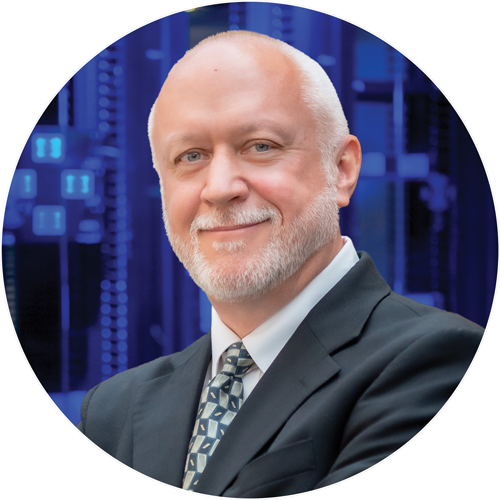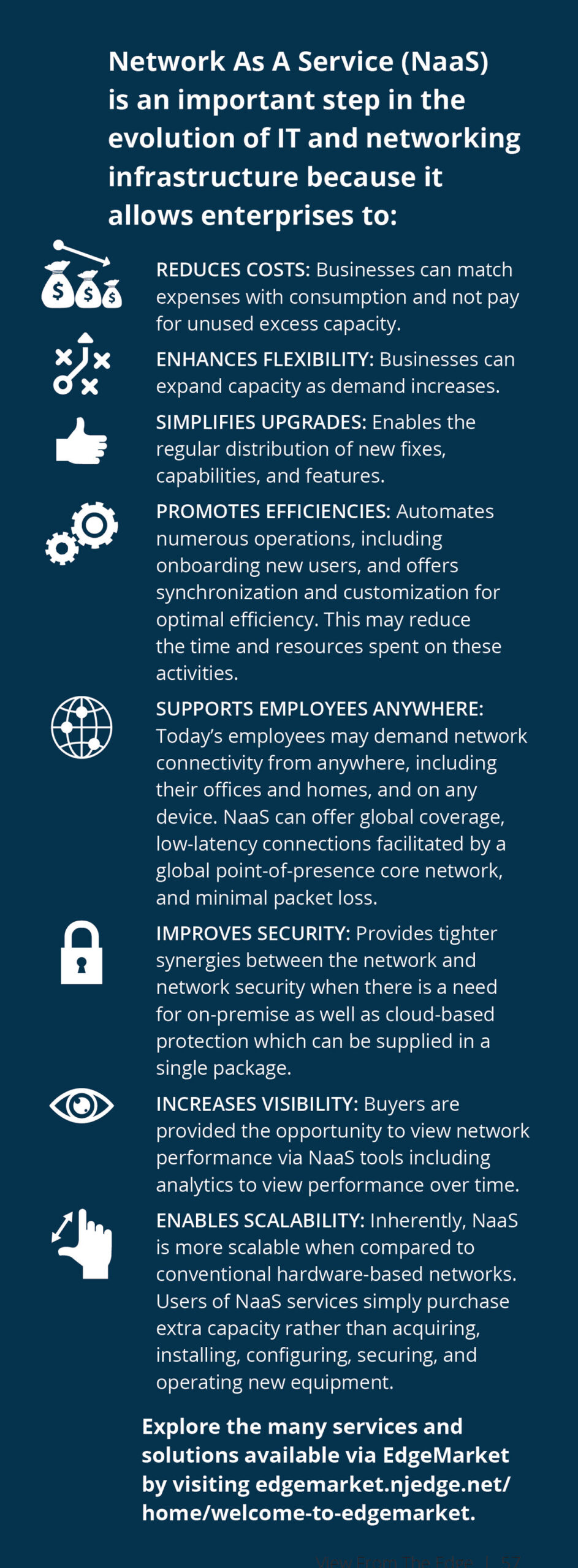Beginning his career as a student assistant in technology services, Michel Davidoff was responsible for pulling thin and thick ethernet at Sonoma State University. Upon leaving the University ten years later, Davidoff was in the role of Director of Networking and Telecommunication. “I was responsible for the campus network that we had grown from around three hundred devices to well over 10,000,” says Davidoff. “I left Sonoma State in 2002 and set my sights on California State University (CSU) Chancellors’ Office. They had started a technology strategy program that included at its core digital equity. The Trustees of CSU were looking to implement the Information Technololgy Strategy (ITS) that was represented as the pyramid. IT infrastructure was at the base of the pyramid, the center, called middle world, included initiatives and projects including security and identity management, and the top was student success. CSU’s visionaries, including leadership and trustees, understood very early on the importance of technology to enable education. I was invited to participate in a system wide initiative to determine the standards for the bottom of the pyramid. Following this meeting, I was eager to help further advance this initiative and joined CSU in a new and exciting role.”
Finding Cost-Effective Solutions
Tasked with helping create a consortium of 23 directors of networking at CSU, Davidoff began building working groups of experts. “Along with being a process facilitator for the consortium, I also created guidelines for writing RFPs, particularly outlining the functional requirements,” explains Davidoff. “A large part of my job at CSU was to provide accurate financial projections, both internal and external, and maintain connectivity for all 23 campuses. In 2006 as wireless technology became more prominent, I was tasked with integrating wireless into each campus. Without more money in the budget to do so, I had to get creative.”
“We began by creating a strategy for network rightsizing,” continues Davidoff. “Since I had the data of every single closet at CSU, I knew that more than 50 percent of the switches were not being used, but because of the fear of not having enough as they grow, the network had been built significantly bigger than necessary. I developed a process that if a port has not been used in 90 days, it will not be refreshed. That freed about 50 percent of the budget delegated for switching and routing. We were able to deploy wireless techology on the campuses, and through a RFP, develop the functional requirements. Later when we needed to enhance and standardize security, we went through a similar process and selected a firewall vendor, and became much more systematic and methodical about the deployment process.”
Spanning over two decades, Davidoff’s career at CSU allowed him to become well versed in delivering scalable, ground-breaking strategies and solutions for large scale infrastructure deployments. “I am proud of our accomplishments at CSU, and I believe I was able to bring a few key things to the University,” shares Davidoff. “First, is that collaboration works, even if it might be a little slower. Working together and developing RFPs can offer tremendous cost savings, in fact, at the end of my career, most of the equipment we purchased was at discounts greater than 80 percent. My job was to create the most efficient administrative process that requires the least amount of money, while providing an exceptional student learning experience.”
“We need to eliminate complexity to enable innovation. If we keep this complexity in our environment, every time someone wants to innovate, we need to change all these features and configurations. Many vendors or wireless controllers have hundreds of different features and it’s difficult to develop best practices. We need a deterministic network and not a non-deterministic network in order to predict the performance.”
— Michel Davidoff
Chief Strategist of Education, Nile

Encouraging Collaboration
Over the years, Davidoff was responsible for security, log management, and later in 2014, developing the cloud strategy for CSU. “For the next three to four years, I developed the CSU cloud strategy and I believe the biggest selling point for leadership was, unlike networking, the Cloud was a new technology,” explains Davidoff. “Instead of several experts from Amazon Cloud and several Azure experts at CSU, I suggested creating a small team that focused on cloud technology and how to make it the most efficient and automated. Throughout my career, I’ve seen the value of collaboration, especially when making important decisions on how the campus is going to run and ensuring systems are as efficient as possible. From a long-term strategic standpoint, I am a believer in the wisdom of the group, rather than the wisdom of the individual. If everyone feels they have a voice, a successful outcome is more likely. This approach was aligned with my approach that we don’t give a campus a budget, we give them a solution.”
A day after Davidoff was set to retire in March 2020, CSU shut down its physical campuses due to the pandemic. “Leadership knew CSU must prepare for remote learning and I began doing a lot of research, along with forming a working group,” explains Davidoff. “We selected a small company to help us teach online in case we would need to offer remote classes. Part of the contract included free licenses for half a million students for up to ten years, as well as licenses for every faculty and staff member. We trained everyone on the software and ensured we could operate online. When the pandemic hit, CSU was the first university system in the U.S. without any downtime because our processes and strategies were ready to go.”
Bringing Insights to a New Role
After retiring, Davidoff began thinking about where he could have an even larger impact on education and helping students. “It became clear that technology companies, especially in the networking domain, are a place where I could make my mark in creating efficient technology solutions,” shares Davidoff. “I learned of a new company, Nile, and I wanted to bring my knowledge and unique perspective of higher education infrastructure and my vast experience in over two hundred network deployments. I knew I could share how the customer thinks because I had been the customer for thirty years.”
“The Edge team works hard to stay at the forefront of innovation in the marketplace. In the world of enterprise networking, Nile represents an entirely new approach that enables organizations to offload the often overwhelming complexities of network management while reaping the benefits of a financially predictable, highly adaptable, and supremely secure network environment. We’re proud to have Nile as a new awardee and partner in our fast-growing EdgeMarket co-op.”
— Dan Miller
Associate Vice President, EdgeMarket

Joining Nile as the Chief Strategist of Education early last year, Davidoff aligns the company’s strategy with an educational lens to ensure all technology and services deliver a superior connectivity experience. “I love the thought leadership part of my role at Nile and writing papers about rethinking networking and higher education,” says Davidoff. “I talk to a lot of students and gather valuable insights about today’s learning expectations. Nile modernizes IT operations through the delivery of a new wired and wireless enterprise network and as a leader in enterprise Network as a Service (NaaS), it allows institutions to stabilize their budgets. From a financial perspective, you’re able to buy a service that assures capacity, availability, and performance. Organizations can plan how much money is needed every year, instead of seeing a huge spike in the budget five years from now to replace the network or to replace routing. Plus, most importantly, using Nile services helps free up staff to focus on other initiatives, like classroom technology or digital transformation.”
“Normally, if an institution purchases a technology solution from a vendor, that system is at max performance on day one,” continues Davidoff. “Six months later, your firewall is upgraded, your core router is not at current code, and you added ten new features. Your capacity and features are now starting to degrade. Without the time to take care of all the maintenance that needs to happen, your investment keeps losing value over time.”
Davidoff says many organizations are not sufficiently leveraging automation in order to efficiently run and maintain the network while creating complexity that no human can solve. “We need to eliminate complexity to enable innovation. If we keep this complexity in our environment, every time someone wants to innovate, we need to change all these features and configurations. Many vendors or wireless controllers have hundreds of different features and it’s difficult to develop best practices. We need a deterministic network and not a non-deterministic network in order to predict the performance.”
Partnering with Edge
Recognizing the important role networking infrastructure plays in the evolution of IT, Edge recently released an RFP to prospective vendors who could provide a NaaS to member organizations. The goal was to provide Edge members with NaaS services that allow these institutions to focus on promoting capabilities and skills, while reducing costs, promoting efficiencies, and improving security. Davidoff led Nile’s response to the RFP and was recently awarded a master contract with Edge (CBTS was the other awardee). “The Edge team works hard to stay at the forefront of innovation in the marketplace,” says Dan Miller, Associate Vice President, EdgeMarket. “In the world of enterprise networking, Nile represents an entirely new approach that enables organizations to offload the often overwhelming complexities of network management while reaping the benefits of a financially predictable, highly adaptable, and supremely secure network environment. We’re proud to have Nile as a new awardee and partner in our fast-growing EdgeMarket co-op.”
Nile helps higher education institutions deliver an uninterrupted wired and wireless experience with a performance guarantee for coverage, availability, and capacity. “Nile can help free up capital and resources to focus on meeting the demands of modern education,” says Davidoff. “We want to help institutions deliver on their mission and provide the strategic value that leadership is looking to achieve. Nile aims to help organizations break free from the traditional constraints of legacy network infrastructures and use IT resources to strategically enhance learning in a digital era.”
To learn more about how Nile is helping institutions move beyond the networking status quo, visit nilesecure.com/enterprise-network/higher-education.



